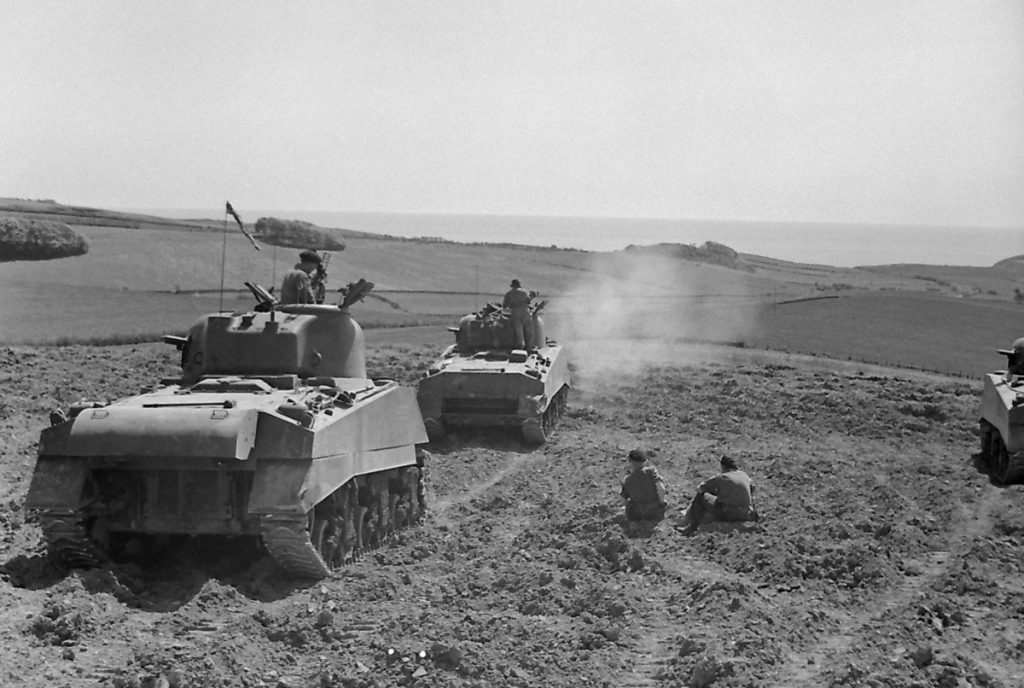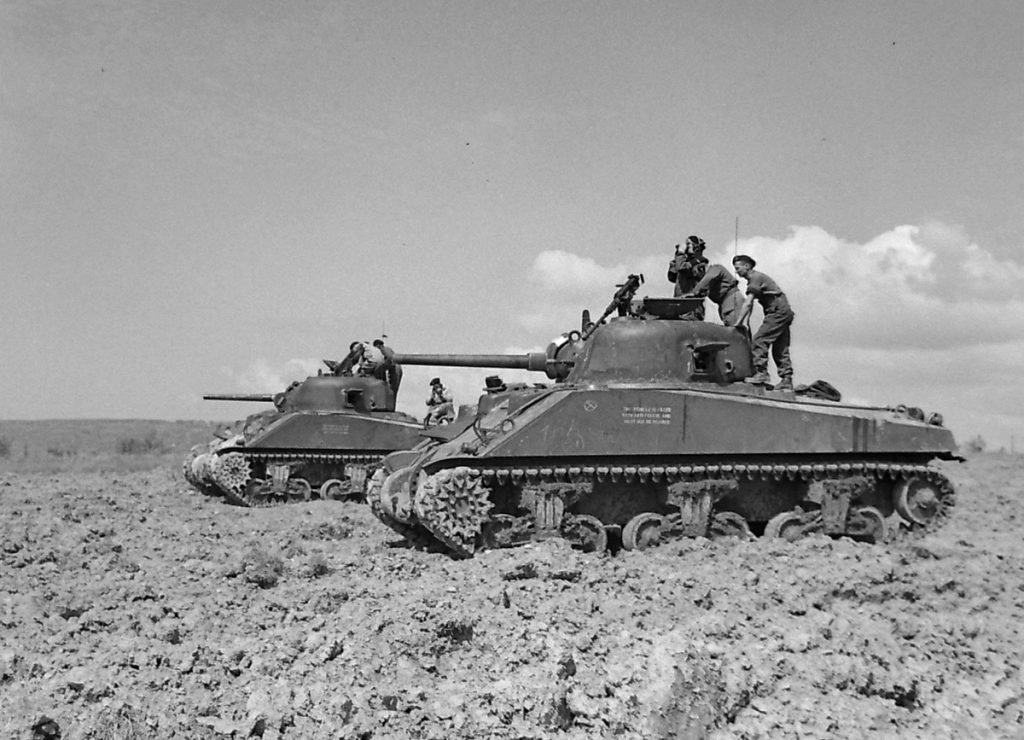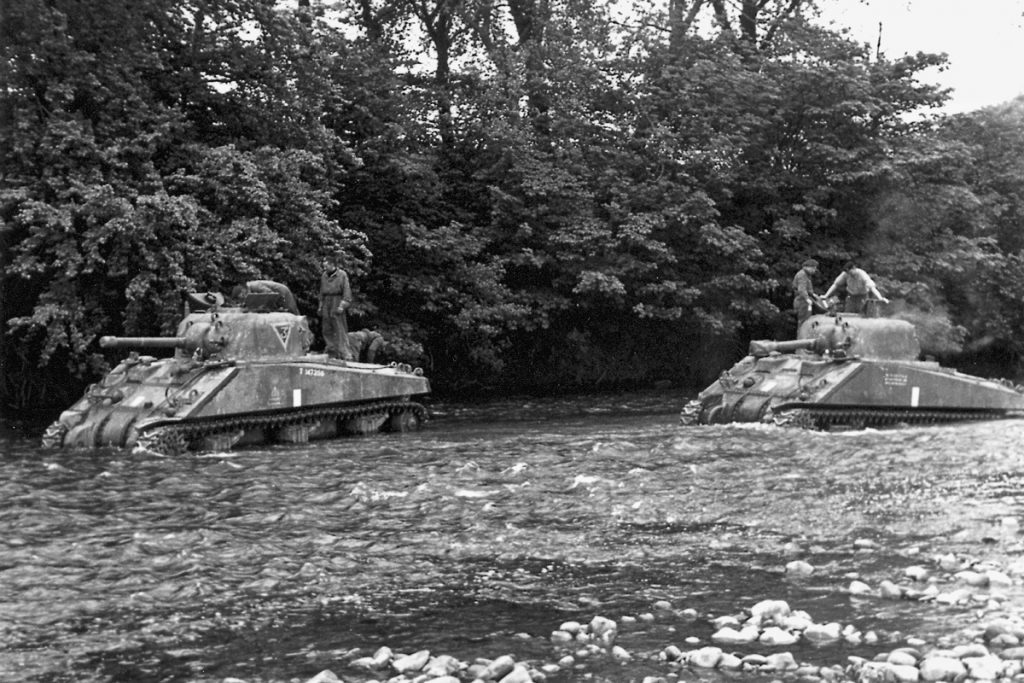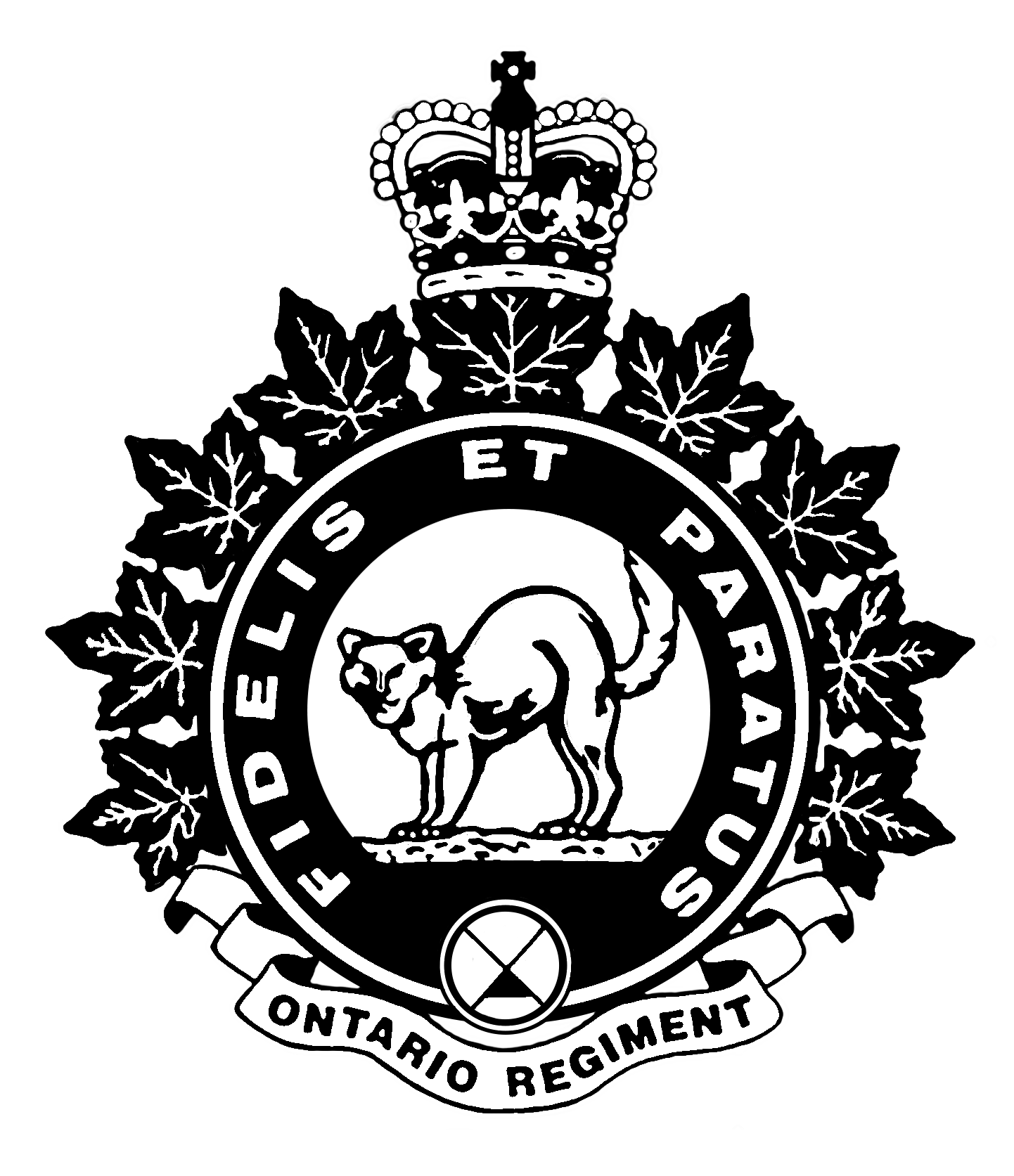The Ontario Regiment used several models of the Sherman tank throughout the campaigns in Sicily, Italy and Northwest Europe, but the most common was the M4A4 or Sherman V, in British nomenclature.
The Sherman was a long way in the future at the outbreak of the war. Obsolete tanks were used while training in Canada (see this article: https://www.ontrmuseum.ca/tankmuseum/blog-post/ontr-tanks-of-second-world-war/) and brand new Churchill tanks awaited them upon their arrival in the United Kingdom in July 1941. The Regiment gave a good workout to their Churchill Mark I, Mark II, Mark III and Mark IV tanks until late March 1943 when they were suddenly ordered to turn them in for Canadian-built Ram II tanks. The Ontarios took their Rams to the Minehead range in Somerset for familiarization shooting in mid-April 1943. In a hint of things to come, six M4 Sherman tanks were taken on charge by the Regiment on 19 April at the Minehead range while Ram tanks were still being delivered. The war diary noted that the Shermans were intended to be used for close support.
It was well-known at this time that mobilization orders had been received, but the location of the Regiment’s impending deployment was unknown. Two parallel sets of events were in motion at this time. This article covers the arrival of the Sherman tanks and their preparation for battle. A separate article covers the administrative side of the Regiment’s preparation for combat.
While the Ontarios were getting up to speed on the Ram tanks at Minehead, Captain Donald S.M. Kerr, the technical adjutant, was dispatched to Stobs Camp, near Hawick, Scotland to take charge of new tanks. The rumour was that these tanks were Shermans. In mid-May the Rams were turned over to Ordnance in situ (the Minehead range and Regimental Headquarters in Worthing, Sussex) and the Regiment journeyed to Stobs Camp.
The Ram tanks were only on Regimental charge for about six weeks. Why the sudden switch to the Sherman? Was it some kind of army screw-up? No, it was really about rapid decision-making and fast moving plans. The original plan appears to have been for the 1st Canadian Army Tank Brigade to keep the Rams for a longer period while they continued their training. On 25 April 1943 the Canadian Government approved the recommendation by General Sir Alan Brooke, Chief of Imperial General Staff, for Canadian involvement in the upcoming invasion of Sicily, known as Operation Husky. The 1st Canadian Infantry Division and 1st Canadian Army Tank Brigade were selected for the task. 1 CATB was chosen as the armoured element due their high level of efficiency. The brigade was to replace the British 33rd Tank Brigade, which was originally scheduled for the Sicily invasion.
The Sherman tank was the standard medium tank for the Allies in the Mediterranean Theatre, thus the 1st Canadian Army Tank Brigade would have to make the conversion. The invasion was scheduled for 10 July, leaving very little time for the Brigade to get trained on their new tank.
The Sherman tank became the primary tank of the Canadian Armoured Corps. Like all early model Shermans, the M4A4 carried a low-velocity, short-barrelled, 75mm gun as main armament. A Browning .30 calibre machine gun was mounted co-axially and another .30 calibre MG was mounted in the front of the hull. A Browning .50 M2 machine gun could be mounted on the roof of the turret. The M4A4 was powered by a Chrysler A57 multibank gasoline engine.
The 1st Canadian Army Tank Brigade received the first Shermans issued to the Canadian Army. As the British 33rd Tank Brigade was longer part of Husky, 1 CATB took possession of their Shermans. Specifically, the Ontarios took over the tanks of the 144th Regiment, Royal Armoured Corps in place at Stobs Camp.
A rapid conversion course was conducted between 12 and 17 May, led by British instructors. The classes covered driving / maintenance and gunnery. A representative from Chrysler Corporation, the manufacturer of the engines in the Sherman, provided lectures to the drivers.
Captain Archibald Whitelaw, Regimental gunnery officer, took the Regiment’s gunners to the ranges at Kirkcudbright, Scotland for firing of the 75mm gun. They left on 19 May and the remainder of the Regiment moved to Kirkcudbright on 20 May. Brigadier W.G. Richards of the Royal Armoured Corps was brought in for lectures on his experience in the North Africa campaign. Brigadier Richards had been the tank adviser to General Bernard L. Montgomery. The Ontarios eagerly absorbed all he had to say.

The firing on the ranges ran between 20 and 24 May, with the gunners firing armour piercing (AP), high explosive (HE) and smoke rounds. The schedule made for long days at Kirkcudbright as the following daily routine shows:
0430 – Reveille
0500 – Breakfast
0600 – First parade
0725 – Tanks at firing point
1200 – Lunch
1630 – Tea
1930 – Finish firing
2100 – Finish last parade
2130 – Supper

General Andrew McNaughton, General Officer Commanding First Canadian Army, visited the ranges on 22 May to observe the firing. When he learned that the allotment of high explosive rounds was insufficient he made arrangements for more ammunition to be sent to the range immediately. The range work ended on 24 May and the Regiment returned to Stobs Camp the following day.
The water-proofing of the tanks began on 26 May. This was a long and exhausting procedure, but it enabled a tank to drive under its own power in up to six feet of water. The process began with the vehicles driven on to ramps made of railroad ties. Each vehicle was scrubbed clean and then a water-proofing compound was applied. Breather stacks were installed to allow air to enter the engines while submerged, and water-proof stripping was applied to the base of the turret. Both the turret stripping and the breather stacks were configured with explosive cord that could be detonated from within the turret. This detonation detached the stripping and the breather stack to allow the tank to quickly go into combat quickly once it was clear of the water. Finally, the tanks were painted a sand colour and given the Allied air recognition symbol. All this work took place during the available daylight hours. At night there were security lectures. With the tanks completely water-proofed, they were tested in the Teviot River and confirmed that the water-proofing was effective.

All water-proofing was completed on 6 June 1943 and the final painting wrapped-up the following day. The tanks were ready for a deployment that was still unknown to the majority of the Regiment. The next phase of preparation for combat is covered in next month’s article.
Rod Henderson
Rod Henderson is the Regimental Historian of the Ontario Regiment. He served as a Sergeant in the Regiment and is the author of “Fidelis Et Paratus: The History of The Ontario Regiment RCAC”.


